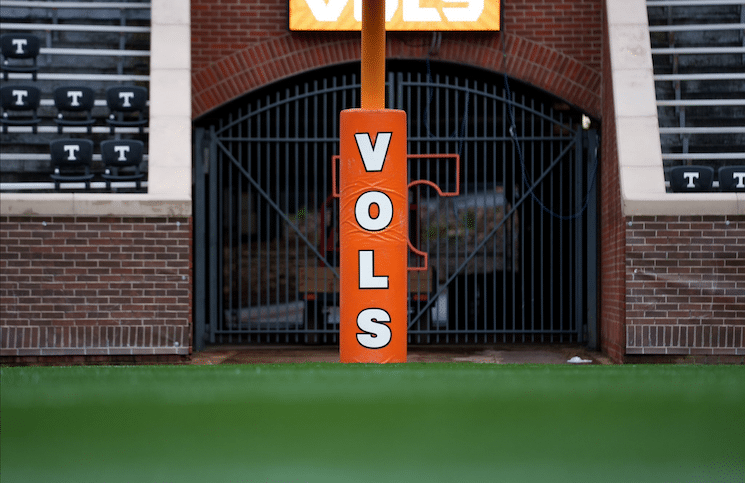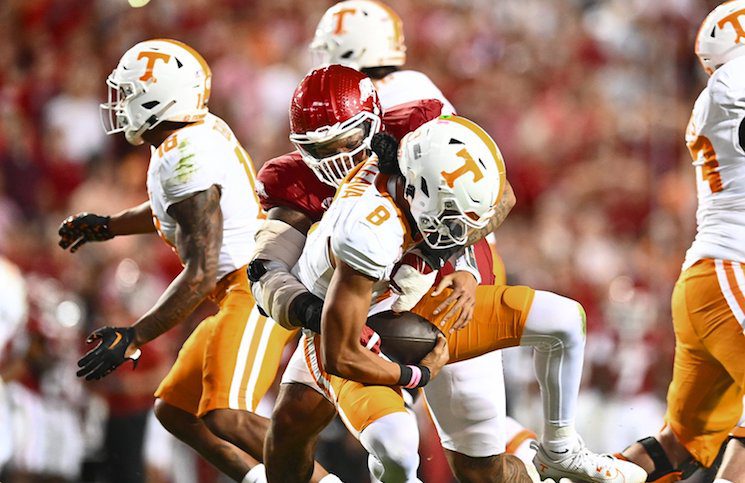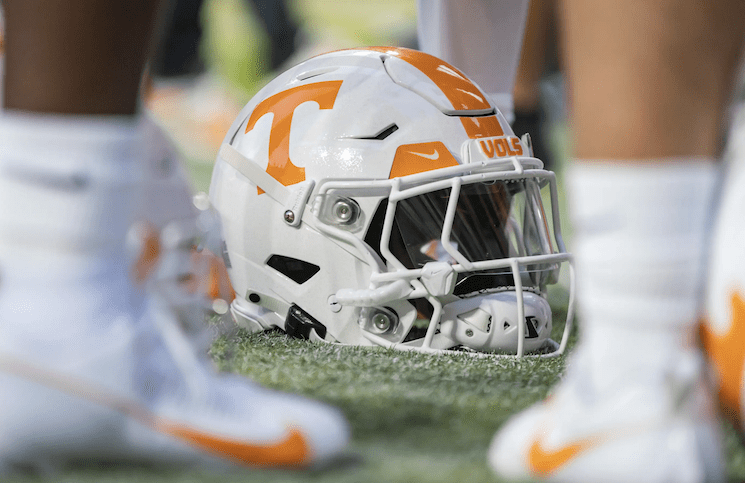Defending the Pass

It’s no secret that Tech’s offense lives and dies by the run game. But the Yellow Jackets’ ability to pass the ball effectively downfield is what makes them so hard to stop. In late game situations, especially when they have the lead, the Yellow Jackets revert to the passing game on third and short situations to confuse the defense.
In the Taxslayer Bowl, Paul Johnson called a downfield pass on third and four, resulting for a big first down that ended Kentucky’s chances of a late comeback.
Tech's passing attack can be dangerous on third down. Here Kentucky rushes 8 and the free safety doesn't rotate over. Dagger. pic.twitter.com/BAwreMnDQi
— Will Boling (@will_boling) August 29, 2017
Since they had to have a stop, Kentucky sold out for the run. The Wildcats send the corner on a blitz, which means the weak-side safety has to track back from the other side of the field in order to make the stop.
This is where having three safeties on the field could help the Vols. If you don’t have to commit extra rushers to stop the pitch man in the option offense, then Tech can’t go over the top like they do here.
Last season was one of Georgia Tech’s more efficient years passing the football. Quarterback Justin Thomas threw for 1,559 yards, which isn’t much. But he only threw two interceptions, completing 53% of his passes. In an offense predicated on short runs setting up the deep pass, that percentage isn’t as bad as it could be.
Against Georgia, the Yellow Jackets were consistent through the air. Thomas didn’t throw much, but when he did, it was downfield.
He finished with 164 yards on just six completions against the Bulldogs. Since Georgia Tech got off to a good start running the ball, the Bulldogs had to commit extra help to stop the run. Thomas was forced to beat them with his arm, and he did.
More #RTIFilmStudy
Blitzing the corner against Georgia Tech is a major risk. Safety doesn't roll over in time…easy pitch and catch. pic.twitter.com/RGoND2ekux
— Will Boling (@will_boling) August 28, 2017
If the corner is going to blitz against the flexbone offense, it leaves a lot of pressure on your safeties to pick up the right receiver. Because with linebackers frozen in run defense, the safeties have no help.
The pre-snap motion has to be matched by the secondary. Even if there is no corresponding motion from the safeties, you have to switch assignments at the snap. In this case, two Georgia defensive backs bite on the pitch man, leaving a wide open pass down the sideline.
Once again, the safety doesn’t roll over in time before the snap to cover the receiver down the sideline. But this pass isn’t the weak-side safety’s fault. To begin with, the corners aren’t jamming the wide receivers, which gives them the ability to get to the second level quickly. When the strong safety sees run, he leaves his zone (highlighted) to cover the pitch man. But so does the corner.
This isn’t a complex passing play. Both receivers are running go routes. If the defense stays at home, it’s stopped easily. But that’s a big if.
In summary, Tennessee can’t fall asleep defensively. And if Bob Shoop decides to bring the house, you better hope it gets to the quarterback. Because if you guess run, and the quarterback options into a deep pass, it can easily go for six. I expect Tennessee to disguise its blitzes, keep a third safety close to the line of scrimmage, and rotate a lot of defensive linemen.
This is a tough task for any team defensively. No matter who Georgia Tech’s quarterback is, the Vols have their hands full with this offense. The Yellow Jackets may not have the athletes to outperform Tennessee, but the mere trickery of the flexbone is enough to give UT problems.








